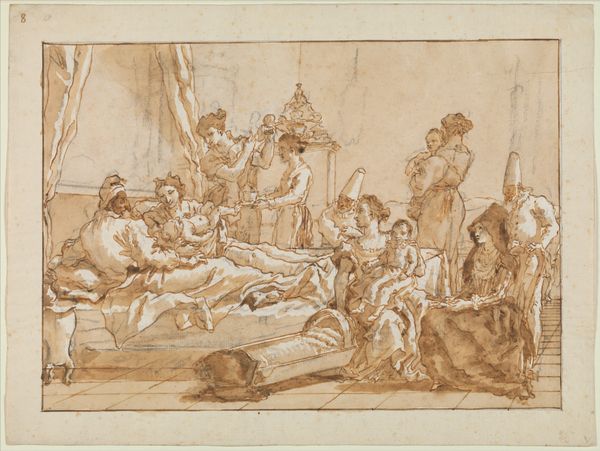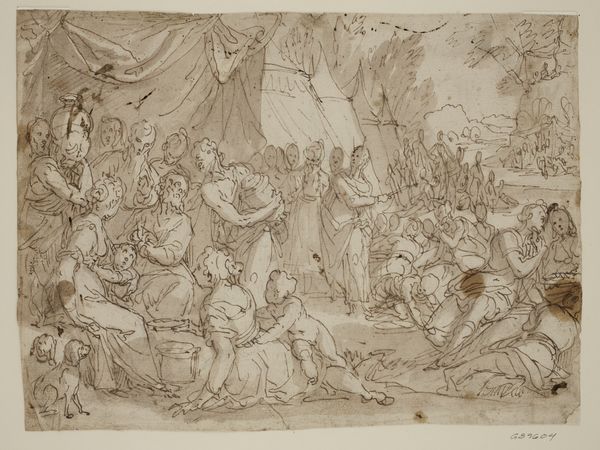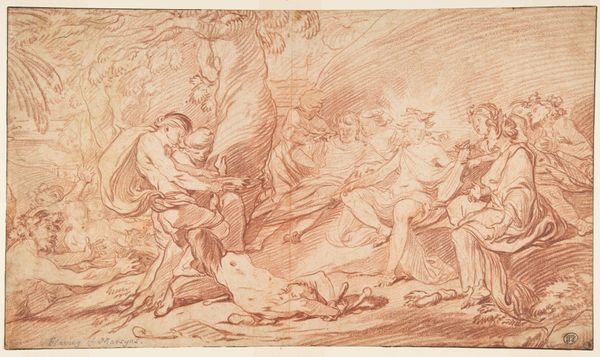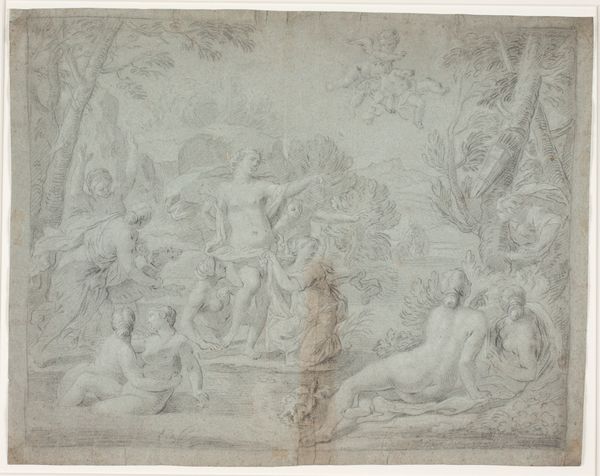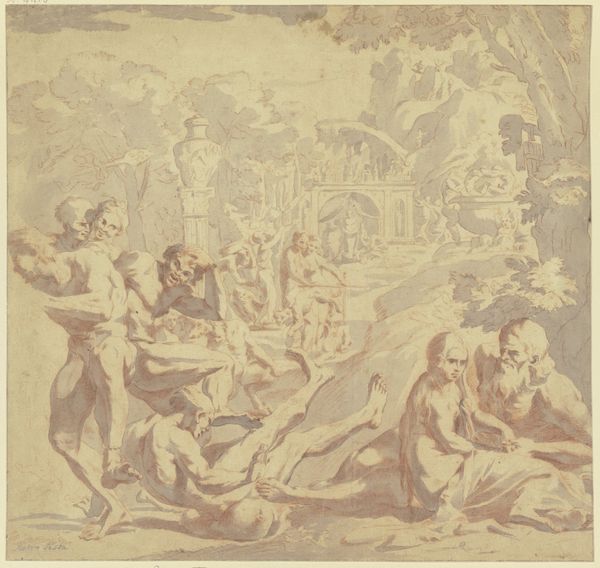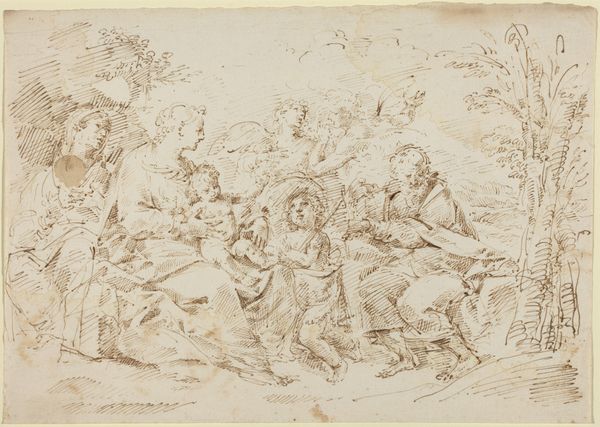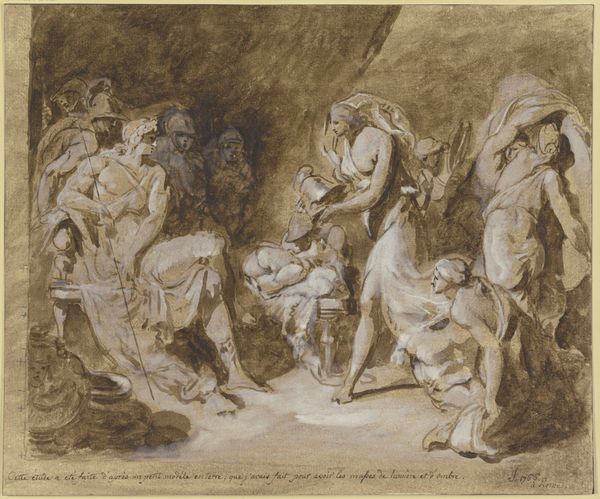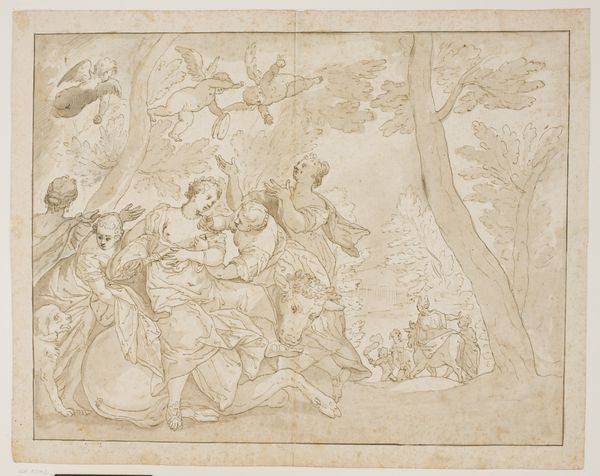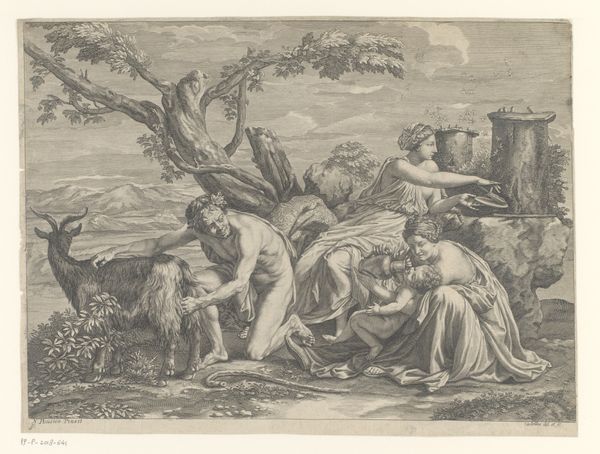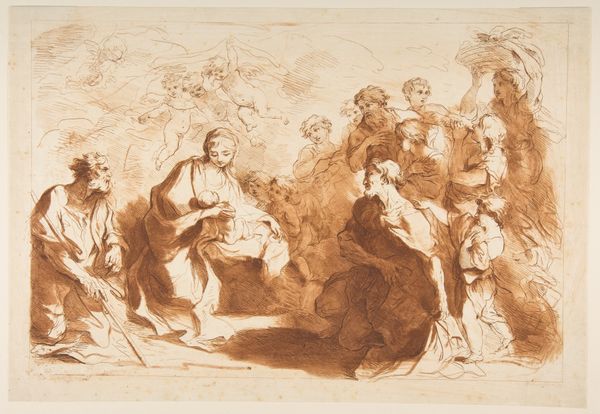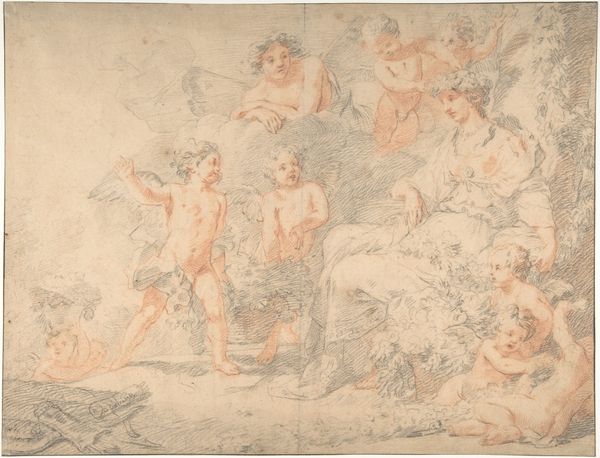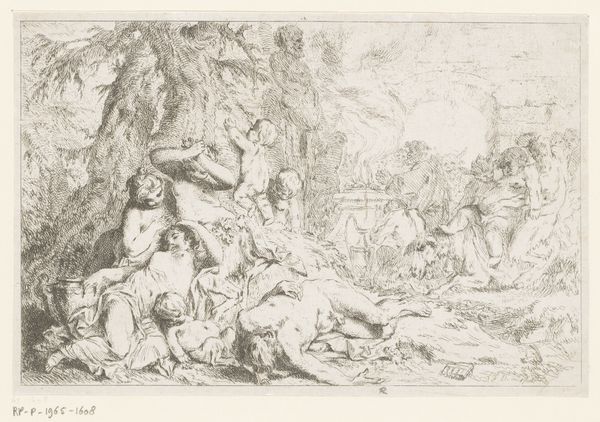
drawing, print
#
drawing
#
allegory
#
baroque
# print
#
female-nude
#
child
#
genre-painting
#
history-painting
#
nude
#
male-nude
Dimensions: sheet: 9 7/16 x 13 11/16 in. (24 x 34.8 cm)
Copyright: Public Domain
Curator: The work before us is a drawing entitled "Bacchanal," created by Adriaan van der Burg sometime between 1700 and 1733. It resides here at the Metropolitan Museum of Art. Editor: My first impression is of warmth. The monochromatic, reddish-brown wash lends the scene a sensuous, almost dreamlike quality. Curator: Indeed. Van der Burg used red chalk with skillful hatching techniques to model forms and create a sense of depth and volume. It’s exemplary of Baroque sensibilities with a genre painting. Let’s talk of materials. Where might he get this type of chalk? Who mixed it into the medium and applied it, in terms of workshop labor? Editor: Leaving aside sourcing issues for now, let us explore the thematic. I see that it echoes classical allegories while capturing the revelry associated with Bacchus. There's the drape and then that suggestion of classical architecture receding behind it; he balances dynamic figuration with serene background spaces. Semiotic structure can’t be denied in the layering. Curator: But isn't it critical to consider who these drawings were commissioned by? Likely wealthy patrons seeking to flaunt their familiarity with classical subjects... It raises questions about power dynamics and access. Even in seemingly innocent scenes, the system is ever-present. How do people relate and feed this machine through such consumption? Editor: Fair point. But I would stress, however, is van der Burg’s formal control of rendering in a rather traditional mythological framework; this is more than just another period-typical production for that class of patron you describe. He masterfully utilizes the interplay of light and shadow. Curator: I won’t lie. The dynamism cannot be denied, yet for whom was it made, and for what societal system? I have my suspicions, obviously, knowing well that culture’s evolution continues. I wonder what he'd make of our dialogue centuries on from its original completion. Editor: Yes, it prompts contemplation, definitely, about changing attitudes towards historical mythologies. It has been nice discussing these pieces with someone who always brings new lenses for reflection to the topic.
Comments
No comments
Be the first to comment and join the conversation on the ultimate creative platform.
